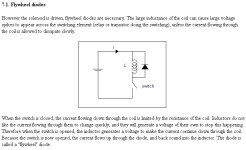Hi,
We got a new machine in our plant a few months ago and we have had an issue with one of the output contacts sticking on the output card. It is a micrologix 1400 with a few expanded i/o modules added to it.
One of the outputs on the expanded output card, the contacts keep sticking closed after the output has been turned off.
This card has been replaced 4 times due to not wanting to shut the machine down and the issue keeps coming up.
Is there anything electrically that i can be looking for that would cause this? It is always the same output. We also have another machine in the plant that the guy who made it says it is exactly the same and we do not have this problem with it.
Thanks.
We got a new machine in our plant a few months ago and we have had an issue with one of the output contacts sticking on the output card. It is a micrologix 1400 with a few expanded i/o modules added to it.
One of the outputs on the expanded output card, the contacts keep sticking closed after the output has been turned off.
This card has been replaced 4 times due to not wanting to shut the machine down and the issue keeps coming up.
Is there anything electrically that i can be looking for that would cause this? It is always the same output. We also have another machine in the plant that the guy who made it says it is exactly the same and we do not have this problem with it.
Thanks.






